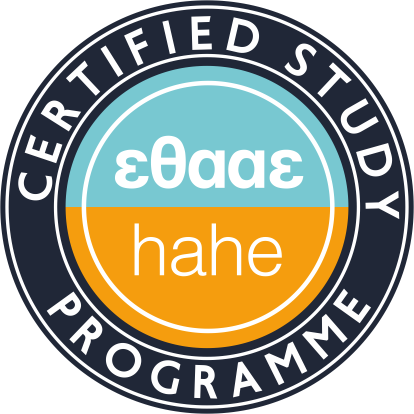Name: Chrisavgi Gourdoupi
Title: Evaluation of EGFR and IGF-IR signaling in the expression of matrix macromolecules and cell functional properties for conventional 2D cell cultures and spheroids
Supervisor: Professor Nikos K. Karamanos
Date: 04/06/2025
Time: 10 am
Zoom link: https://upatras-gr.zoom.us/j/99967801031?pwd=VuhPwGQLaoQ54ZX6IHyai2BYuIsWIS.1
Cancer is one of the most serious diseases in humans in developed countries. Statistical studies show that they are the second most common cause of death after heart disease. Breast cancer is a disease characterized by significant phenotypic and genotypic heterogeneity, which is reflected in the remodeling of the extracellular matrix (ECM).
The ECM is a highly dynamic macromolecular network that constantly changes in normal and pathological conditions. The action of the various matrix effectors may alter ECM macromolecular composition, a process associated with cancer progression. On the other hand, receptor tyrosine kinases (RTKs) are critical signaling effectors for gene expression and cell functional properties. Among RTKs, epidermal growth factor receptor
(EGFR) and insulin-like growth factor receptor (IGF-IR) are considered important players in breast cancer diagnosis and treatment since they are implicated in tumor growth and invasiveness potential. These RTKs affect the composition of ECM in health and disease. Evaluating the changes that ECM undergoes following inhibition of EGFR and IGF-IR is an emerging area in cancer research and pharmacological targeting. Notably, crosstalk between EGFR and IGF-IR plays a significant role in regulating the behavior and morphology of breast cancer cells, including MDA-MB-231 (highly aggressive) and MCF-7 (low invasive hormone-dependent) cell lines. It is noted that up-to-date studies are focused on the well-known 2D cell culture models where cells grow on a polystyrene plate and have been used for many years to study the net effects of signaling molecules and receptors. However, 2D models fail to mimic the dynamics of the tumor microenvironment in respect to true three-dimensional tumor development, growth, and spreading. To this end, the recently developed 3D cell culture models are considered as a more closely related condition regarding the biochemical properties and cell-cell interactions of tumors as compared to conventional 2D platforms.
For that reason, this study aims to utilize 3D cell platforms as to evaluate, through quantitative RT-PCR analysis, and wetting experiments the effect of agents inhibiting the EGFR and IGF-IR pathways (alone or in combination) in the expression of ECM key components and the functional properties of breast cancer cells (proliferation, migration, spreading), comparing new 3D cell models with the traditional 2D ones.
Our results indicated the crosstalk between IGF-IR and EGFR, and the effect of each on the proliferation and migration capacity. Moreover, phenotypic alterations emerged between 2D and 3D conditions that were related to the expression of important molecules such as MMPs.
Additionally, this research confirmed basic features of the two cell lines, both in 2D and 3D conditions, but also indicated new properties and responses dependent on the environment of the cell culture. Overall, our findings are indeed promising, both in advancing the understanding of RTKs signaling, with particular emphasis on the intricate crosstalk between EGFR and IGF-IR pathways, and in demonstrating the utility of 3D models as effective tools for unraveling the biological processes governing the distinct breast cancer phenotypes.




